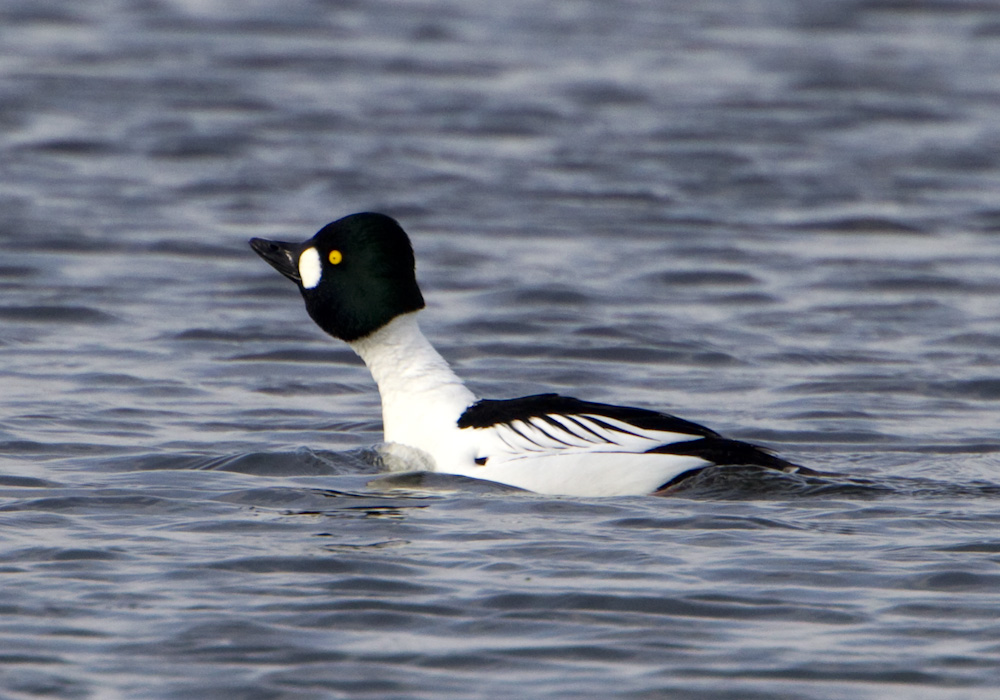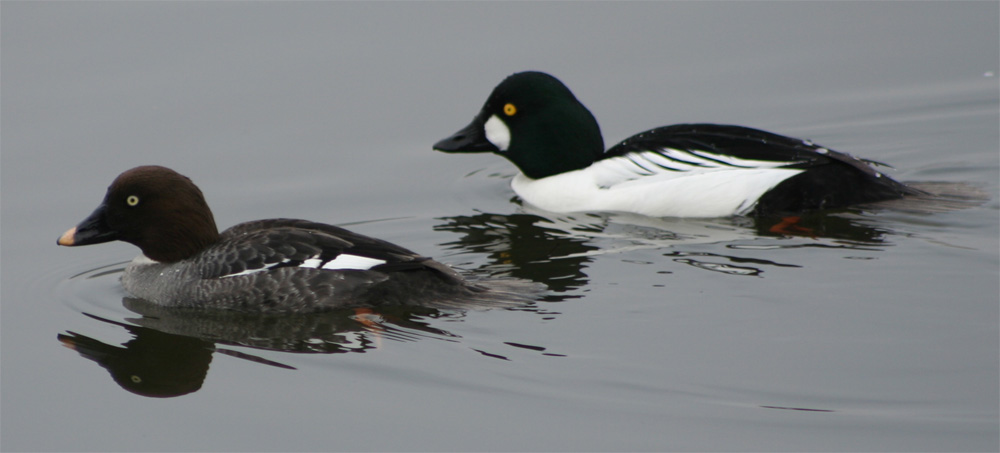

This species dives to forage for food, preferring to feed at a depth of about 20 feet. BehaviorĬommon goldeneye fly swiftly and strongly in tight flocks, high above the water.

Just as the common goldeneye is late to arrive in Kansas, it is quick to depart, leaving in March to breed in the forests of Canada. However, it gathers in sizable flocks on most the larger lakes, playas, and reservoirs, as well as the rivers, where it will remain all throughout the winter until the last bit of open water has frozen over. It is one of the last ducks to arrive in the fall, waiting to appear until November. The common goldeneye is quite common across Kansas in winter and migration season. This sound does not come from the voice, but from the wings. However, this species is known as the “whistler” due to a metallic whistling sound produced in flight. Courting males give a nasal peent call like that of the common nighthawk, while females produce a harsh gack primarily when disturbed. The common goldeneye is generally silent. Note that this species appears to have an unusually short neck when in flight. She, too, has a yellow eye, although hers is rather paler than that of her mate. The female is gray overall with a rich brown head, a white collar, a white belly, and a white wing patch. In flight, he looks more or less black and white (even his head may appear black in poor lighting), with large white wing patches and orange feet.

Goldeneye duck sounds Patch#
Otherwise, he is largely white with a black back and a white oval patch at the base of his bill. He takes his name from his bright golden eye, which contrasts sharply with his glossy, dark green head. The male common goldeneye ( Bucephala clangula) presents a very unusual appearance that is not readily forgotten.


 0 kommentar(er)
0 kommentar(er)
